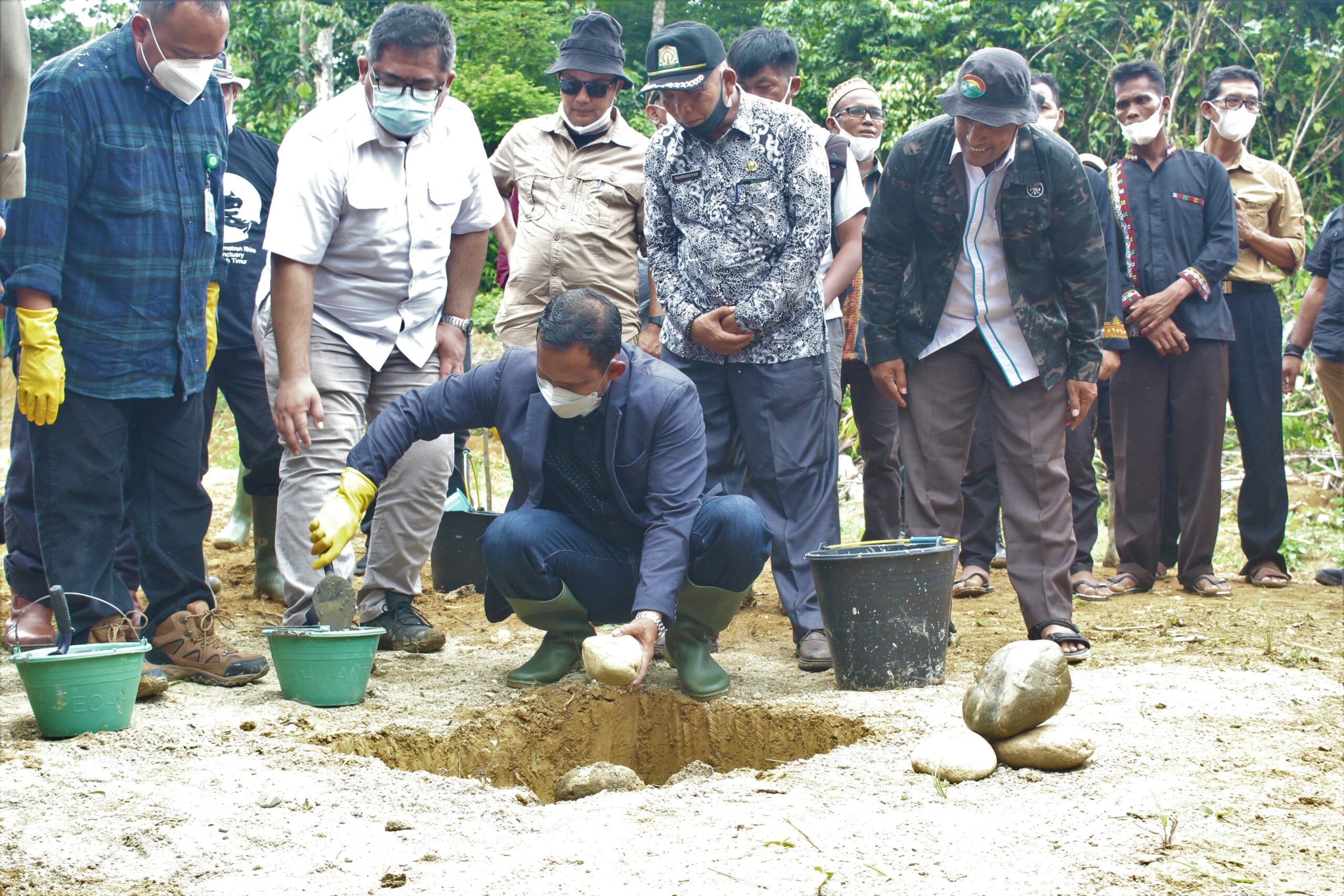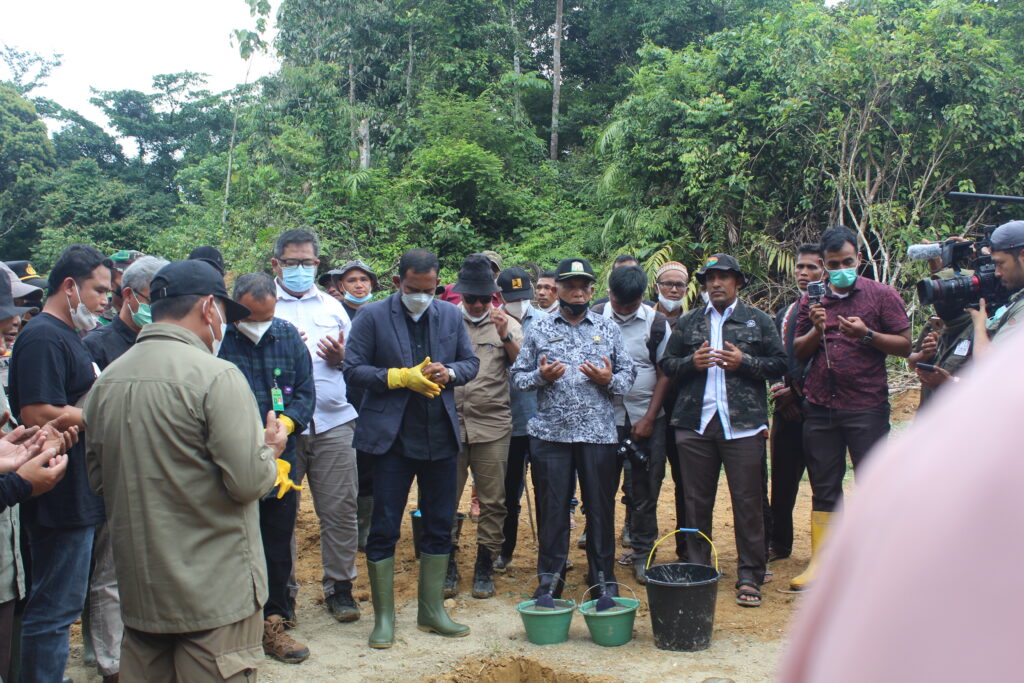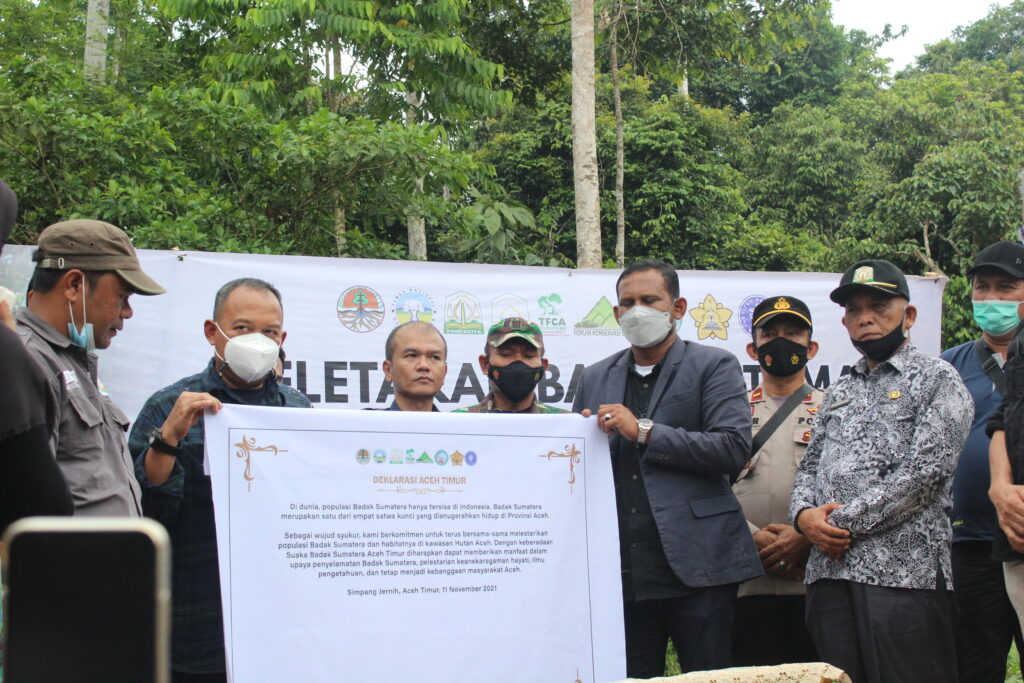New Sumatran Rhino Sanctuary to be Built in Northern Sumatra

Conservation officials in Indonesia came together on November 11, 2021 to break ground for a new Sumatran Rhino Sanctuary (SRS). The new facility will be built in inside the Leuser Ecosystem in East Aceh district, in Aceh province at the northern tip of Sumatra. This area is believed to be home to the largest surviving population of Sumatran rhinos in the wild.
The new SRS will be the third, joining current breeding facilities in Way Kambas National Park in southern Sumatra as well as one in East Kalimantan on the island of Borneo. The construction of sanctuaries are part of an ongoing efforts that support the Indonesia’s Emergency Action Plan to save Sumatran rhinos from exctinction.

The new project is managed by the Leuser Conservation Forum (FKL), a partner of the International Rhino Foundation. The SRS in Leuser will span about 130 hectares (320 acres) in an ecosystem that is the only place on Earth that is home to rhinos, tigers, orangutans and elephants. The first phase of construction will see the establishment of four paddocks, a permanent boma, and a workers’ camp, and is expected to complete by March next year.
Fewer than 80 Sumatran rhinos survive in very small and highly fragmented populations, and is the most endangered of all rhinoceros species due to its rapid rate of decline. Sumatran rhinos exist only in protected areas where they are physically guarded by Rhino Protection Units (southern Sumatra) and Wildlife Protection Units (northern Sumatra). Continued protection, combined with consolidating small, fragmented populations into larger ones, and intensifying conservation breeding efforts, are the best hope for the species’ survival.
IRF would like to congratulate Indonesia and FKL on a fantastic event to kick off such an important phase in the recovery of the Sumatran rhino.


One thought on “New Sumatran Rhino Sanctuary to be Built in Northern Sumatra”
CONGRATULATIONS and best wishes for your success!
Hope it is not too late, when not even a hundred are left in the whole world (20 times less than original paintings by Picasso).
You mention tigers, orangutans and elephants, which are actually far more plentiful than the Sumatran rhinos and can reproduce well in captivity.
They are also more popular because they are abundantly filmed (the same goes for the African rhinos).
The vast majority of people do not even know the Sumatran rhino exists at all and how extraordinarily different it is among rhino species, actually a precious and amazing living fossil.
Is it the case for the Indonesian people? Do they know that the fate of the last Sumatran and Javan rhinos lie in their hands as Indonesia is probably now the one and only country on Earth where these two species survive? And if so, do they feel proud or at least concerned?
The battle for the survival of these rhinos starts at home, as this is the place where they face most risk through poaching and deforestation.
It will be won in the hearts, so let’s hope that in the near future the rhinos will be officially declared a “National Treasure” in Indonesia and as such widely featured on banknotes and stamps, celebrated in schools, or in songs and films, what not?
Let me conclude with a dream or “une bouteille à la mer” as we say in French (a message in a bottle at sea). The whole world came to adore the little fawn Bambi when Walt Disney created the eponymous film.
After Little Bambi, why not now Little Bumpy?
The film could start with a child visiting a prehistoric cave, overwhelmed by the beauty of mammoths and woolly rhinos painted on the rock walls. He feels sad he will never see these extraordinary animals but the same night he joins them in a dream and an old woolly rhino reveals him he will manage to survive in lost jungles on the other side of the planet. When he wakes up, the child decides to find him back…
The day the Walt Disney Company (which by the way is a stakeholder in the conservation of Sumatran rhinos through the National Geographic Society) decides to create this cartoon, the whole world will come to know – and hopefully – love the Sumatran rhino. Shine a spotlight on it and let it become a star!
Best wishes to our Indonesian friends and long live Badak Sumatera!